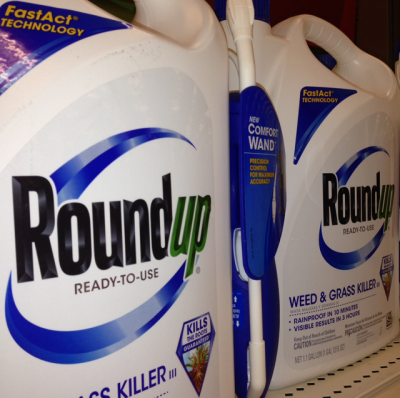Monsanto’s Roundup and Other Glyphosate-Based Herbicides Directly Linked to Chronic Disease Spike

A new correlation study published in the Journal of Organic Systems has linked glyphosate, the primary ingredient in Monsanto’s best-selling herbicide, Roundup, to an enormous increase in chronic diseases across the United States.
Supporting countless studies before it, this new report is a detailed analysis proving an undeniable link between glyphosate-based herbicides and the rates of chronic disease all over the country.
Dr. Nancy Swanson and the President of the International Federation of Organic Agriculture Movements (IFOAM), Andre Leu, led the research team which proved – once again – that glyphosate and Roundup are lethal, even in small amounts.
The chemical is prevalently used on crops across the nation and world. Friends of the Earth Europe, says that more than 650,000 tonnes of glyphosate products were used over five years ago, with the amount being used increasing each year.
This increase in use is contributing to the development of diseases such as diabetes, obesity, lipoprotein metabolism disorder, Alzheimer’s, senile dementia, Parkinson’s, multiple sclerosis, autism, and cancer. The report details how there is a direct correlation between the incidence of these diseases and glyphosate use.
It isn’t as if the toxicity levels of glyphosate are not already known by its makers. Monsanto was refusing to release to the public lab tests conducted in St. Louis, Missouri, which gave them authority to use glyphosate in China.
This is the company that is responsible for making PCBs, DD.T and Agent Orange as well, all of which caused irreparable health damage ignored by regulators for decades.
Glyphosate-based herbicides have been identified as the next widely used chemical on a list of chemicals consumers should be aware of.
Read: 7 Nasty Effects of Pesticides
The world’s number one weed killer, Glyphosate, or N-(phosphonomethyl)glycine, is posing serious harm to humans and the environment, yet the poison developed by John E. Franz of the Monsanto Company has been allowed on the US market since the 1970s.
It isn’t just Monsanto who sells glyphosate, though. There are now over 100 different manufacturers of the product throughout the world. You can find it in other products with names such as Clearout 41.
Although glyphosate is used primarily in agricultural settings, it is also sprayed by public authorities on roads and pavements. Even managers of golf courses and home gardeners still use the toxic chemicals to control weeds.
According to the new study:
“Within the last 20 years there has been an alarming increase in serious illnesses in the US, along with a marked decrease in life expectancy (Bezruchka, 2012). The Centers for Disease Control and Prevention (CDC) estimates that the cost of diabetes and diabetes-related treatment was approximately $116 billion dollars in 2007.
Estimated costs related to obesity were $147 billion in 2008 and cardiovascular diseases and stroke were $475.3 billion in 2009. Health care expenditures in the US totaled 2.2 trillion dollars in 2007 (CDC, 2013a). The onset of serious illness is appearing in increasingly younger cohorts. The US leads the world in the increase in deaths due to neurological diseases between 1979-81 and 2004-06 for the 55-65 age group (Pritchard et al., 2013).”
The study points out that, “these findings suggest environmental triggers rather than genetic or age-related causes,” especially since chronic diseases are showing up in younger and younger individuals.
“During this same time period, there has been an exponential increase in the amount of glyphosate applied to food crops and in the percentage of GE food crops planted (Benbrook, 2012). We undertook a study to see if correlations existed between the rise of GE crops, the associated glyphosate use and the rise in chronic disease in the US.”
The bottom line?
“The significance and strength of the correlations show that the effects of glyphosate and GE crops on human health should be further investigated.”

